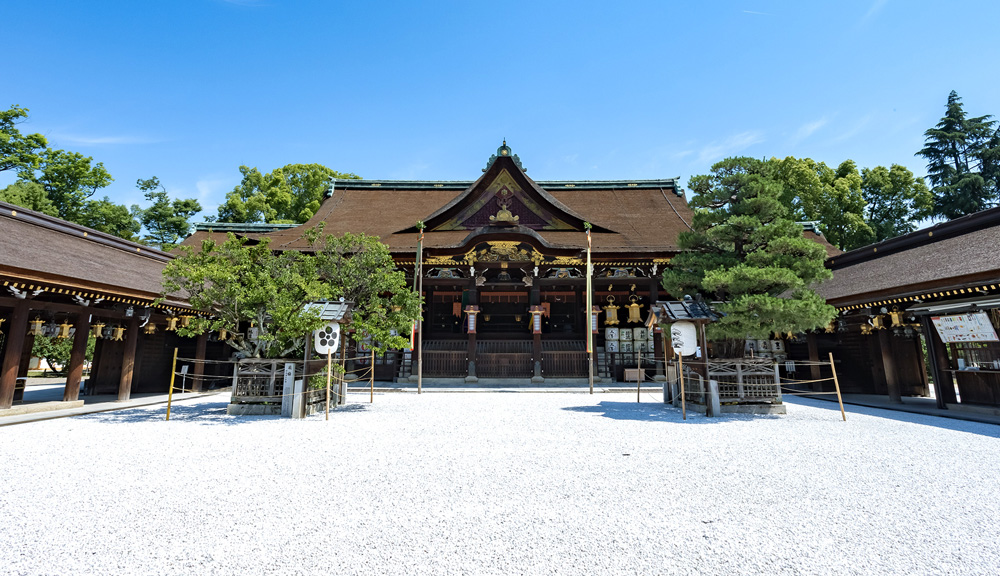Introduction
Kitano Tenmangu Shrine is one of Kyoto’s most historically significant and culturally captivating shrines. Dedicated to Sugawara Michizane, the deity of learning, it attracts countless students seeking academic success. Famous for its plum grove and autumn foliage, this shrine embodies a unique blend of faith, nature, and art. Let’s explore this Japanese cultural treasure that harmoniously combines spirituality and natural beauty.
Key Information
- Dedicated to Sugawara Michizane, the deity of learning
- Features a plum grove with nearly 2000 trees
- Hosts a large flea market on the 25th of every month
- Best seasons: plum blossoms in spring and maple leaves in autumn
- Home to the traditional “Baikasai” tea ceremony
Historical Background
Kitano Tenmangu Shrine was established during the Heian period to appease the spirit of Sugawara Michizane, a scholar and politician unjustly exiled. Legend has it that after Michizane’s death, his vengeful spirit caused a series of disasters, leading to the construction of hundreds of Tenmangu shrines across Japan. As one of the most important, Kitano Tenmangu has witnessed a millennium of Kyoto’s history.
Main Attractions
Plum Grove
The shrine’s most famous feature is its plum grove, boasting nearly 2000 trees. From February to March, the blossoming plums draw numerous visitors. On February 25th, the shrine hosts the special “Baikasai” tea ceremony, featuring maiko and geiko from the nearby Kamishichiken geiko district, creating a grand and elegant spectacle.
Maple Garden
In autumn, Kitano Tenmangu’s maple garden becomes one of Kyoto’s most popular spots for viewing fall foliage. From late October to early December, hundreds of maple trees lining the garden’s stream burst into vibrant reds. At night, illuminations transform the maples into a magical landscape.
Main Hall and Worship Hall
The shrine’s primary structures include the main hall and worship hall, exemplifying typical Japanese shrine architecture. In front of the worship hall stands the “flying plum tree,” said to be a descendant of the tree that followed Michizane from Kyoto to his exile in Kyushu.
Best Time to Visit
- Plum blossom season: February to March
- Autumn foliage season: Late October to early December
- Flea market: 25th of every month
Getting There
Take Kyoto City Bus number 50 from Kyoto Station directly to Kitano Tenmangu-mae stop (about 30 minutes, 230 yen). Alternatively, take the Karasuma Subway Line to Imadegawa Station, then transfer to bus 203 to Kitano Tenmangu-mae stop.
Hours and Admission
- Shrine hours: 7:00 AM – 5:00 PM
- General admission: Free
- Plum Grove (early February to late March): 9:00 AM – 4:00 PM, 1200 yen
- Maple Garden (late October to early December): 9:00 AM – 4:00 PM, evening illumination until 8:00 PM, 1000 yen
Visitor Tips
- The shrine can get crowded during exam seasons; consider visiting during off-peak hours.
- Bring cash for the flea market, as many vendors may not accept credit cards.
- Spring and autumn are the most picturesque but busiest seasons; plan your visit accordingly.
- Maintain a respectful silence and demeanor, honoring local religious customs.
Official Website
Kitano Tenmangu Official Website (Japanese)
Conclusion
Kitano Tenmangu Shrine is more than just a historic religious site; it’s a sanctuary that blends natural beauty, traditional culture, and spiritual devotion. Whether you’re seeking academic blessings, admiring seasonal beauty, or experiencing Japanese traditions, Kitano Tenmangu offers an unforgettable journey into Kyoto’s unique charm. Start planning your visit to this cultural gem today!
